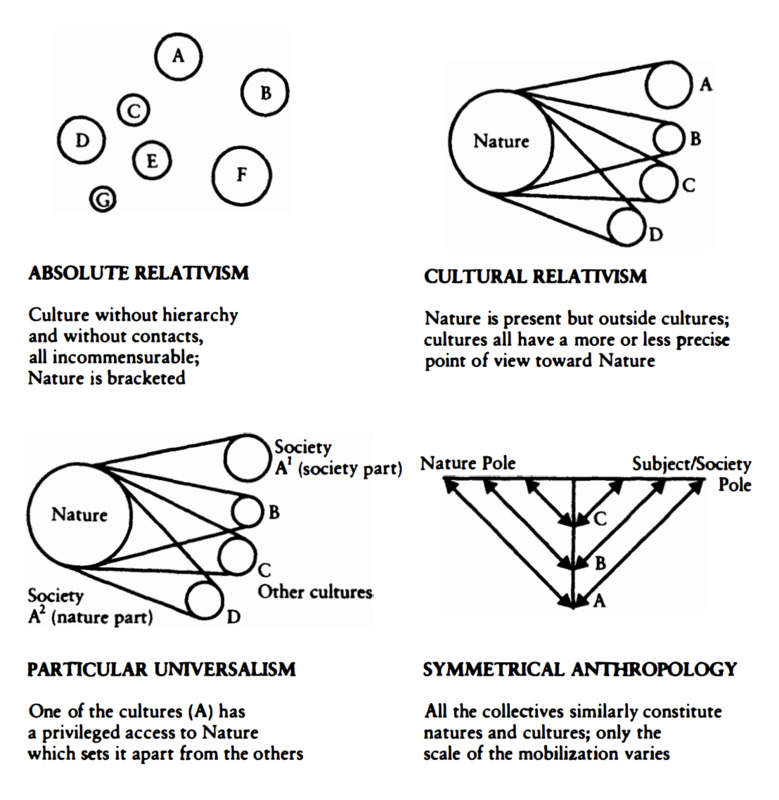-
Title
-
Relativism and Universalism
-
Description
-
I can now compare the forms of relativism according to whether they do or do not take into account the construction of natures as well. Absolute relativism presupposes cultures that are separate and incommensurable and cannot be ordered in any hierarchy; there is no use talking about it, since it brackets off Nature. As for cultural relativism, which is more subtle, Nature comes into play, but in order to exist it does not presuppose any scientific work, any society, any construction, any mobilization, · any network. It is Nature revisited and corrected by epistemology, for which scientific practice still remains off camera, hors champ. Within this tradition, the cultures are thus distributed as so many more or less accurate viewpoints on that unique Nature. Certain societies see it 'as through a glass darkly', others see it through thick fog, still others under clear skies. Rationalists will insist on the common aspects of all these viewpoints; relativists will insist on the irresistible distortion that social structures impose on all perception. The former will be undone if it can be shown that cultures do not superimpose their categories; the latter will lose ground if it can be proved that the categories are superimposed (Hollis and Lukes, 1982; Wilson, 1970). In practice, however, as soon as Nature comes into play without being attached to a particular culture, a third model is always secretly used: a type of universalism that I would call 'particular'. One society - and it is always the Western one - defines the general framework of Nature with respect to which the others are situated. This is Levi-Strauss's solution: he distinguishes Western society, which has a specific interpretation of Nature, from that Nature itself, miraculously known to our society. The first half of the argument allows for modest relativism (we are just one interpretation among others), but the ·second permits the surreptitious return of arrogant universalism - we remain absolutely different. In Levi-Strauss's eyes, however, there is no contradiction between the two halves, precisely because our Constitution, and it alone, allows us to distinguish society A1, made up of humans, from society A2, composed of nonhumans but forever removed from the first one! The contradiction stands out today only in the eyes of symmetrical anthropology. This latter model is the common stock of the other two, whatever the relativists (who never relativize anything but cultures) may say.
-
Designer
-
Latour, Bruno
-
Date
-
1993
-
Source
-
We Have Never Been Modern
-
Bibliographic Citation
-
Latour, Bruno. 1993. We Have Never Been Modern. Translated by Catherine Porter. Harvard University Press. Figure 4.4. Page 105.
-
is composed of
-
English
Circle
-
has attribute
-
English
Solid Line
-
English
Arrow
-
depict things of type
-
English
Typological or Classification

